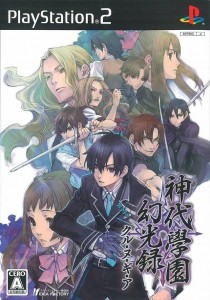 Not content with merely dreaming up bad ideas, Idea Factory now resorts to stealing them. Far from being shocked or upset, I’m rather pleased to see this side of Idea Factory. Up till now I’d heard the tales of their horribleness, but I’d never personally experienced it for myself. The games I played were either unexpectedly enjoyable (Ore ga Omae wo Mamoru, Wand of Fortune, Motto Nuga-Cel) or so immediately off-putting that I quit within an hour, thus keeping the damage to a minimum (Hiiro no Kakera, Generation of Chaos, Blazing Souls). This is the first time I’ve encountered a bad !f game and stuck it out to the end. It’s been… quite the education.
Not content with merely dreaming up bad ideas, Idea Factory now resorts to stealing them. Far from being shocked or upset, I’m rather pleased to see this side of Idea Factory. Up till now I’d heard the tales of their horribleness, but I’d never personally experienced it for myself. The games I played were either unexpectedly enjoyable (Ore ga Omae wo Mamoru, Wand of Fortune, Motto Nuga-Cel) or so immediately off-putting that I quit within an hour, thus keeping the damage to a minimum (Hiiro no Kakera, Generation of Chaos, Blazing Souls). This is the first time I’ve encountered a bad !f game and stuck it out to the end. It’s been… quite the education.
First off, what is Kamiyo Gakuen ripping off? If you saw “Gakuen” in the title and guessed the Tokyo Majin Gakuen series, you score 5/10 (+1 for even knowing about that series). I’m sure they would have copied Tokyo Majin if they could have, but a company named Asmik Ace beat them to the punch years earlier with Tenshou Gakuen Gensouroku (2004) and Tenshou Gakuen Gekkouroku (2006). The canonicity/otherwise of the various Majin/related games is a little confusing, but I’ll try to sort them out as best as I can.
– Tokyo Majin Gakuen series (1998-2008) – Developed by Shuuho Imai and Shout! Designworks, published by Asmik Ace. Canon.
– Tenshou Gakuen series (2004-2006) – Developed and published by Asmik Ace. Disowned by original creators. Not canon.
– Kowloon (Kuuron) Youma Gakuenki (2004) – Developed by Shuuho Imai and Shout! Designworks, published by Atlus. Canon.
– Tokyo Mono Hara Shi: Karasunomori Gakuen Kitan (2010) – Developed by ??? published by Atlus. Official spin-off (?)
– Kamiyo Gakuen: Makouroku Kurunugia (2008) – LOL Idea Factory.
Despite being a straight up copy of Tokyo Majin and despite being bashed to hell for being straight up terrible, Asmik Ace’s Tenshou Gakuen series still earned itself a small cult following. Enough so that Idea Factory thought it would be a good idea (because they’re such good judges, amirite) to copy that instead of going back to the source. Or coming up with something original, but again, LOL Idea Factory.
Similarities to other games.
Apart from the Tokyo Majin and Tenshou Gakuen games, Kamiyo Gakuen also borrowed heavily from the Shin Megami Tensei/Persona games, particularly Persona 3. Below is some of the evidence I’ve lined up, some concrete, some a little more circumstantial. I’ll do my best to illustrate with screenshots where available.
First, the feelings selection menu, an indisputable trademark of the Tokyo Majin series. There’s no better way to announce you’re copying them than to use an incredibly vague, frustrating, senseless and pointless system of answering questions by indicating a general emotion instead of simply answering the question. This is one idea that should have lived and died with Tokyo Majin, but somehow it’s popular enough that games are still copying it to this very day. What gives?
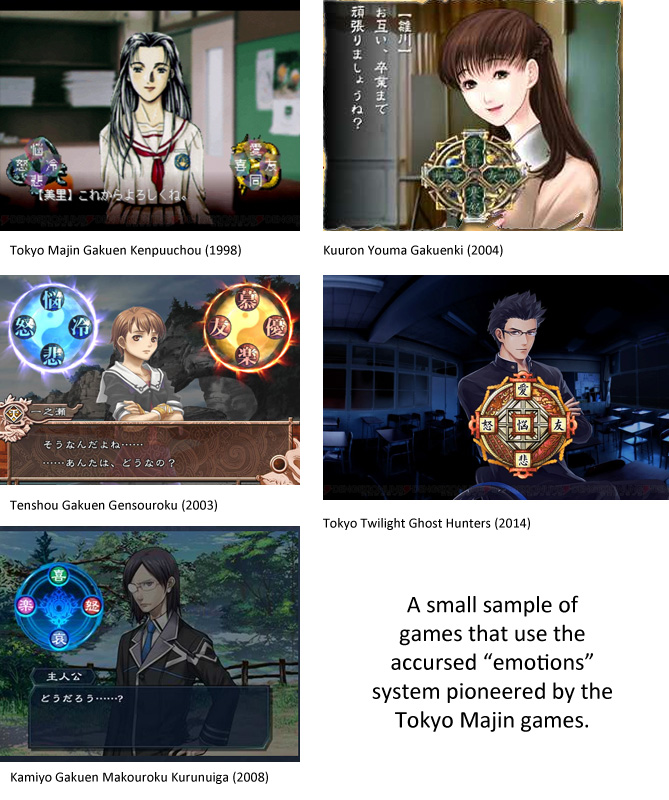 Exhibit B is the battle system, a pale, non-functioning copy of the “Press Turn” system from Nocturne, Digital Devil Saga and other SMT games. The yellow symbols in the upper right corner of the Kamiyo screenshot below (left) show the “pick up” icons that allegedly increase when you hit the enemy with a critical attack or an element it’s weak to. In practice this almost never happens, as I’ll explain much later below.
Exhibit B is the battle system, a pale, non-functioning copy of the “Press Turn” system from Nocturne, Digital Devil Saga and other SMT games. The yellow symbols in the upper right corner of the Kamiyo screenshot below (left) show the “pick up” icons that allegedly increase when you hit the enemy with a critical attack or an element it’s weak to. In practice this almost never happens, as I’ll explain much later below.
 The use of icons to represent battle action is nothing new, but there’s no denying that Kamiyo’s icons look uncomfortably like Persona 3’s, right down the shared use of a backpack icon to represent items. Furthermore, I might be reaching a little here, but Kamiyo Gakuen’s status screens look a lot like Persona 3 persona status menus to me, both in terms of layout and color scheme.
The use of icons to represent battle action is nothing new, but there’s no denying that Kamiyo’s icons look uncomfortably like Persona 3’s, right down the shared use of a backpack icon to represent items. Furthermore, I might be reaching a little here, but Kamiyo Gakuen’s status screens look a lot like Persona 3 persona status menus to me, both in terms of layout and color scheme.
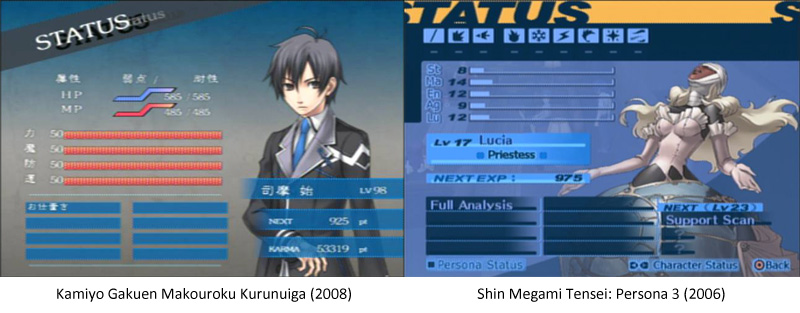 In even further ‘homage’ to Persona 3, there are stages of the moon displayed on the main screen, but the moon plays absolutely no role in the game. There are also supposed to be 12 powerful enemies you can fight in turn, but you fight only 2 of them before the story takes a different turn and forgets all about their existence.
In even further ‘homage’ to Persona 3, there are stages of the moon displayed on the main screen, but the moon plays absolutely no role in the game. There are also supposed to be 12 powerful enemies you can fight in turn, but you fight only 2 of them before the story takes a different turn and forgets all about their existence.
By the way, does this enemy look familiar?
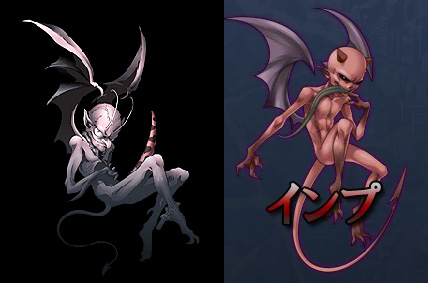 Idea Factory went with original (and actually fairly decent) monster designs for the most part, but it seems they just couldn’t resist slipping a little extra ‘homage’ in.
Idea Factory went with original (and actually fairly decent) monster designs for the most part, but it seems they just couldn’t resist slipping a little extra ‘homage’ in.
One last thing about the battles: Kamiyo Gakuen’s combo attacks were clearly inspired by those in the Tenshou series:
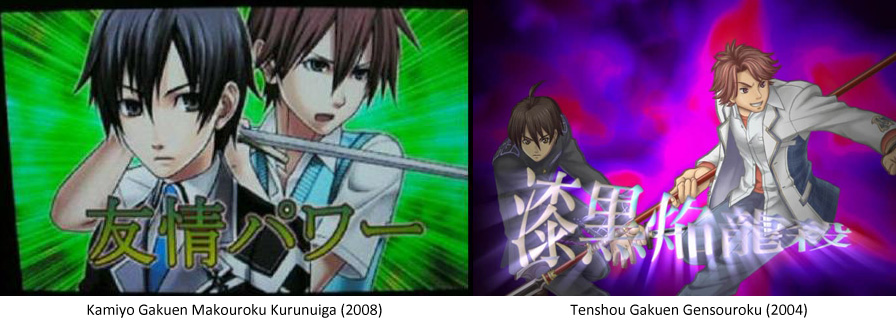 Last, but not least, the character designs. On its own, there’s nothing suspicious about Idea Factory’s decision to use Minako Iwasaki (best known to western fans for the Rune Factory games) for the character designs. But then you realize she also did the character designs and cover art for the Tenshou series:
Last, but not least, the character designs. On its own, there’s nothing suspicious about Idea Factory’s decision to use Minako Iwasaki (best known to western fans for the Rune Factory games) for the character designs. But then you realize she also did the character designs and cover art for the Tenshou series: 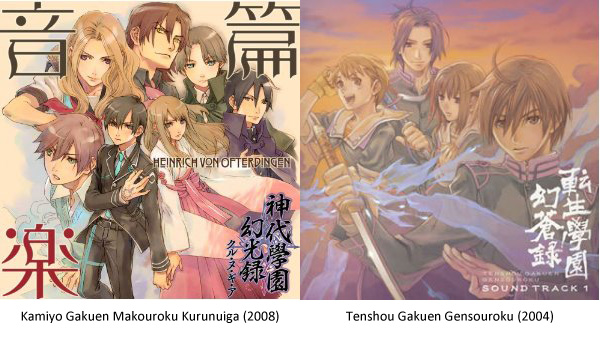 Couple that with the other similarities between the two titles and it becomes very hard to believe Idea Factory wasn’t trying to pass off Kamiyo Gakuen as a ‘spiritual successor, only not really’ to the Tenshou series (and by extension to the Tokyo Majin series). It’s even clearer when you look at the titles in kanji. Kamiyo Gakuen‘s “Makouroku” – 幻光録 – is very likely a combination of two kanji from the Tenshou titles: “Gensouroku” –幻想録 – and “Gekkouroku” -月光録 .
Couple that with the other similarities between the two titles and it becomes very hard to believe Idea Factory wasn’t trying to pass off Kamiyo Gakuen as a ‘spiritual successor, only not really’ to the Tenshou series (and by extension to the Tokyo Majin series). It’s even clearer when you look at the titles in kanji. Kamiyo Gakuen‘s “Makouroku” – 幻光録 – is very likely a combination of two kanji from the Tenshou titles: “Gensouroku” –幻想録 – and “Gekkouroku” -月光録 .
The story, which wasn’t all that bad. While I was paying attention, at least.
High-school girls have been going missing in Kamiyori City. One of those girls happens to be the Main Character’s sister Ruri. Also demons are attacking people and a mark has appeared on his hand. One day, he meets up with people from a group named Masak Mavdil, one thing leads to another and they end up in Tokyo Tower, where MC’s sister dies and he gets his hand cut off as part of a ritual to open the gateway to hell.
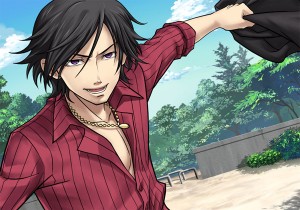 The present world now literally going to hell, the MC and his troops place a special phone call to people 100 years to the past and ask them to do something about the bad guys. Then follows 3 hours of filler with FeMC and three bishies that counts as nothing but a flashback to show how the bad guy went bad. That’s him on the right, btw, sorry to spoil. :-p
The present world now literally going to hell, the MC and his troops place a special phone call to people 100 years to the past and ask them to do something about the bad guys. Then follows 3 hours of filler with FeMC and three bishies that counts as nothing but a flashback to show how the bad guy went bad. That’s him on the right, btw, sorry to spoil. :-p
The flash into the past also involves a sudden genre shift into an otome visual novel, most likely sucker-punching male players to hell and back. A considerable amount of time is wasted chronicling the sudden, unconvincing love affair between FeMC and Big Bad Noin. All this while demons are rampaging through the city, mind you.
To add insult to injury, FeMC comes out of the whole thing very poorly; while male MC handles the loss of his sister, best friend and right hand in one night with remarkable aplomb, FeMC falls completely to pieces when her boyfriend of barely two weeks disappears. With nothing left for her to do but mope, the story flashes forward again, and male MC’s friends figure out a way to go back into the immediate past and save Ruri and MC’s hand. They do that, the present and the distant past merge and they all defeat the last boss(es) together.
Once the credits roll, there’s a sequel hook thrown in where all kinds of new characters and enemies suddenly pop up in the space of 15 minutes, but even Idea Factory didn’t have the nerve to make a sequel to this game so the hook has been dangling ever since. Towards the end of the game, I ignored a lot of the exposition about why the two worlds come closer every 100 years (something about the Tanabata legend) and what Masak Mavdil was formed for (was it even explained?). The parts of the story that I did pay attention to were moderately interesting, albeit poorly told.
Truth be told, it wasn’t all that different from many a JRPG story, and at least !f had the courtesy to end things within 9 hours – in fact, most reports have it at 3-6 hours long. The game is also fully-voiced and the VAs range from meh to quite passable. I also like the character designs and promotional art, and the soundtrack isn’t too bad either. That’s about all I can commend Kamiyo Gakuen for, I’m afraid. 
How doth thou sucketh, let me count the ways.
There are many good reasons why Kamiyo Gakuen was nominated for Crappy Game of the Year in 2008. The following list is nowhere near exhaustive.
1. Unlike the Tokyo Majin Gakuen and Tenshou Gakuen games, the word ‘Academy’ (Gakuen) is in the title just for show. Nothing ever happens at school, and you rarely spend any time there. In fact, apart from both MCs, none of your other party members even go to school. “Gakuen” was obviously added solely to deceive the fans of the other games. And it worked too, if the angry reviews on Amazon are anything to do by.
2. As I mentioned, the game tracks moon phases, but the moon plays no role in the game. In addition to that, the main streets of the city of Kamiyori is laid out in a (broken) pentagram shape. Much is made of this in the story, but ultimately the shape of the city plays no role in developments. By the latter half of the game, that device has been largely ignored.
3. “Character backstory”? Is that something you eat?
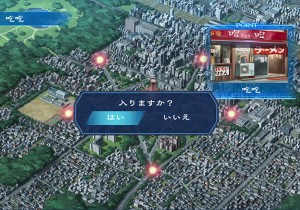 4. The story is simple enough. Too simple for Idea Factory in fact, so they did their best to complicate it by throwing in terms willy-nilly from the Kabbalah, medieval literature and whatever else Japan imagines when they think ‘western religion.’ Faust, Masak Mavdil, Malebranche, Samael, etc.
4. The story is simple enough. Too simple for Idea Factory in fact, so they did their best to complicate it by throwing in terms willy-nilly from the Kabbalah, medieval literature and whatever else Japan imagines when they think ‘western religion.’ Faust, Masak Mavdil, Malebranche, Samael, etc.
Just because they throw the terms about doesn’t mean they’ll explain them, though. I had to resort to Wikipedia to find out what ‘Kuru-nu-gi-a’ means (it’s Sumerian for ‘land of no return’). If they never even mentioned the word in-game, I could write it off as just a made-up word added to give the title some flair. But they do mention it once or twice in nonsensical, throwaway fashion, like much of the rest of the in-game mythology. Why not explain it, then? “Whoa now, let’s not get carried away,” says Idea Factory.
5. The game has plenty of CGs to spare when nothing important is going on. e.g. when FeMC first bumps into Noin or when FeMC jumps into Noin’s arms. On the other hand, important scenes have to make do with a verbal description, such as when MC’s hand is cut off and used in a summoning ritual, or when he gains a black demon arm after defeating the monster hiding within it. Or, you know, the entire ending sequence.
6. The time travel gimmick is wasted because according to this game there is virtually no difference between Taisho-era and Heisei-era Japan. More trees, fewer buildings, funny clothing, that’s it. I find it especially unbelievable how the FeMC could just move out of her house and go live in a strange mansion with a bunch of guys, even going on public dates with one of them, without anyone even raising an eyebrow.
7. The affection/affinity system is 100% useless. The affection your party members feel/don’t feel for you has no effect on the endings, or, in fact, on anything else. There are only two endings, one for each main character, and you pick the one you want just before the final boss fight. It should go without saying that the game has zero replay value.
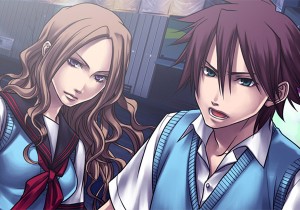 8. You’ll miss meeting certain characters if you don’t trigger the correct flags early on. However the game will still progress like you did meet them, and they’ll show up pleased as punch in the ending sequence like nothing ever happened. I’m talking about you, Mukoujima! Certain characters will also appear and talk to you all meaningful-like and then never show up again for the rest of the game.
8. You’ll miss meeting certain characters if you don’t trigger the correct flags early on. However the game will still progress like you did meet them, and they’ll show up pleased as punch in the ending sequence like nothing ever happened. I’m talking about you, Mukoujima! Certain characters will also appear and talk to you all meaningful-like and then never show up again for the rest of the game.
9. Battles are so easy you can fight everything on Auto-Battle right from the very beginning. This is also the only sane way to play the game, since the pace of battle is extremely sluggish.
10. The Press Turn Pick Up system doesn’t work. How could it? You have absolutely no way of finding out what element an enemy is weak against. No spell, no item. And you don’t even learn any magic until two-thirds of the way through the game. Even when you do land a critical, the battle moves on like nothing happened. If I got a turn bonus for doing so, I sure didn’t notice. In fact, I’m not even sure those were criticals I landed, since all the moves look the same.
11. Your party members have elemental weaknesses, but you can buy cheap damage-negating accessories right from the start so no enemy can ever take advantage of those weaknesses.
12. All status effect attacks are 100% effective, 100% unavoidable and 100% permanent. Especially when you use it on the enemy. This means that, yes, you can paralyze all enemies including the final boss on turn 1, turn on Auto-battle and walk away.
13. Despite how weaksauce they are, bosses still have an inordinately high amount of HP and defense. While ‘fighting’ the first last boss, I went into the kitchen, fixed myself a glass of lemonade, checked the contents of my fridge, did some light stretches, checked my mail and came back and the battle was STILL going on.
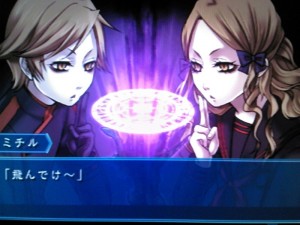 14. The miss rate for both allies and enemies is very high, at least 30%. This does nothing except frustrate you and prolong battles unnecessarily, since every battle would be over in one or two turns if you didn’t miss repeatedly.
14. The miss rate for both allies and enemies is very high, at least 30%. This does nothing except frustrate you and prolong battles unnecessarily, since every battle would be over in one or two turns if you didn’t miss repeatedly.
15. The encounter rate is stupidly high. Unpredictable, too. Normally, even in high-encounter games, you can guess how many steps it will take until the next battle. Here you can have 3 battles within 3 steps of movement and then only 3 more in the next 5 steps. How thrilling!
16. The stat distribution system is useless. Most battles will be over before you have a chance to use anything except regular attacks, so just pour everything into Strength. It’s not like the boss is ever going to hit you anyway.
17. Since stats are useless, levels are largely useless too, since all they do is make the enemies stronger. Despite that, the game throws levels at you after almost every battle, no matter how minor. Boss battles, on the other hand, give up petty amounts of EXP that barely exceed what you’d get from the random encounters around town.
18. There are only about 20 enemies designs in the game, split between the past and the present. Instead of new enemies appearing as you level up, the existing enemies level up with you. I’ve played games with level-scaling, but none that kept the exact same batch of enemies right from level 1 until the end of the game. Most games have the decency to try to fool you with palette swaps and name changes at least.
19. You’re rarely told where to go to progress the story. Instead you have to click on map locations at random, wait for them to load and then see if there’s anything to be found there.
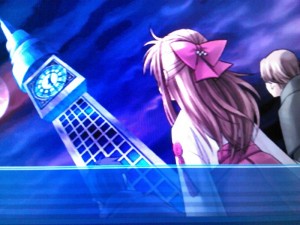 20. There are a lot of skills your characters can learn and a lot of items and accessories they can buy. Apart from Paralyze and Heal, every single one is useless. Skills also come with ‘unusual’ names like ‘Fils/Eufils’ for ‘heal’ ‘Fan/Zafan’ for fire magic, ‘Rotan/Ritan’ for wood magic, etc. Since they’re useless, I’ve already forgotten them all.
20. There are a lot of skills your characters can learn and a lot of items and accessories they can buy. Apart from Paralyze and Heal, every single one is useless. Skills also come with ‘unusual’ names like ‘Fils/Eufils’ for ‘heal’ ‘Fan/Zafan’ for fire magic, ‘Rotan/Ritan’ for wood magic, etc. Since they’re useless, I’ve already forgotten them all.
Why I’m not even mad
Why should I be mad? Japanese fans who paid up to ¥7,140 (~$80) for a copy can’t be blamed for breathing fire at the crud they got for their money. For me, this is an iso I downloaded on a whim many years ago, so the only thing I’ve lost is 9 hours of my life (which still hurts, but not really.) I suppose there’d be room for disappointment if I thought for a second Idea Factory was honestly trying to make a good game and just failed. When a game is so obviously and so deliberately half-assed, there’s nothing else I can do but shake my head in slack-jawed amazement. And more than a little amusement, to be honest. In a way, this is what a true kusoge should be: not the ones that actually tried to be good, but the ones that just didn’t give a damn – but still charged a premium price anyway.
This is not to say I recommend the game. It goes beyond “I wonder if it’s as bad as they say” levels. It’s a genuinely bad game by even by the most generous of standards. Far from discouraging me, however, it’s made me an even bigger fan of Idea Factory. Maybe one day I, too, will stumble upon the ultimate landmine that will make me swear off !f and its subsidiaries for life, but if even Kamiyo Gakuen couldn’t do it…no, such a game is too terrible to imagine.
Let’s just conclude that I was lucky to get away with my sanity intact, that I’m in a surprisingly good mood for someone who just finished an extremely crappy game, and that I’m ready to play something that’s genuinely good for a change and leave it at that.
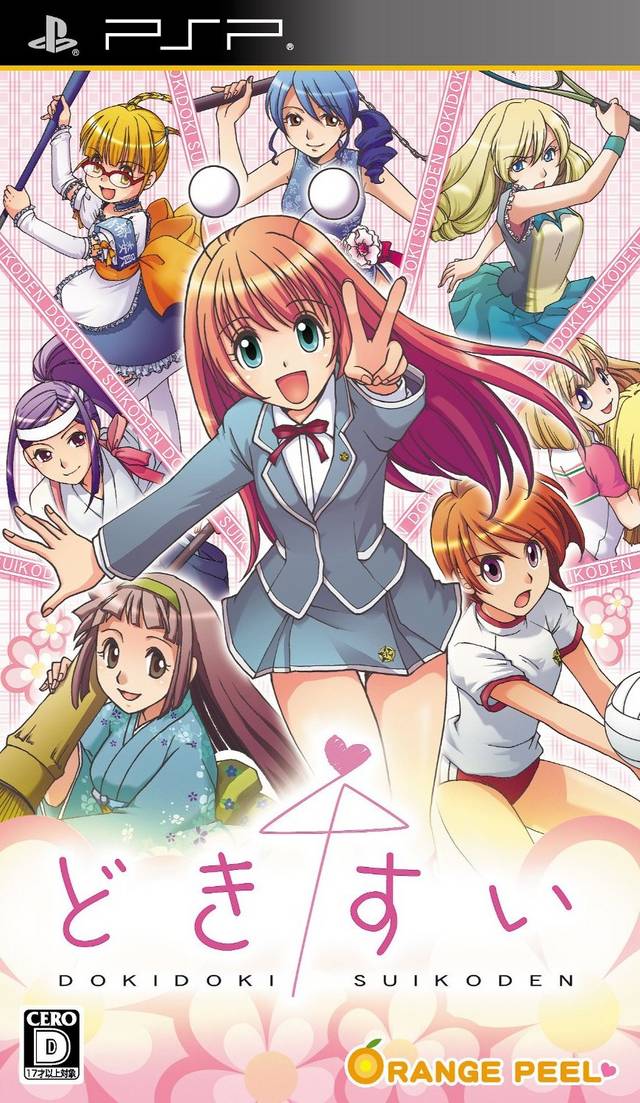
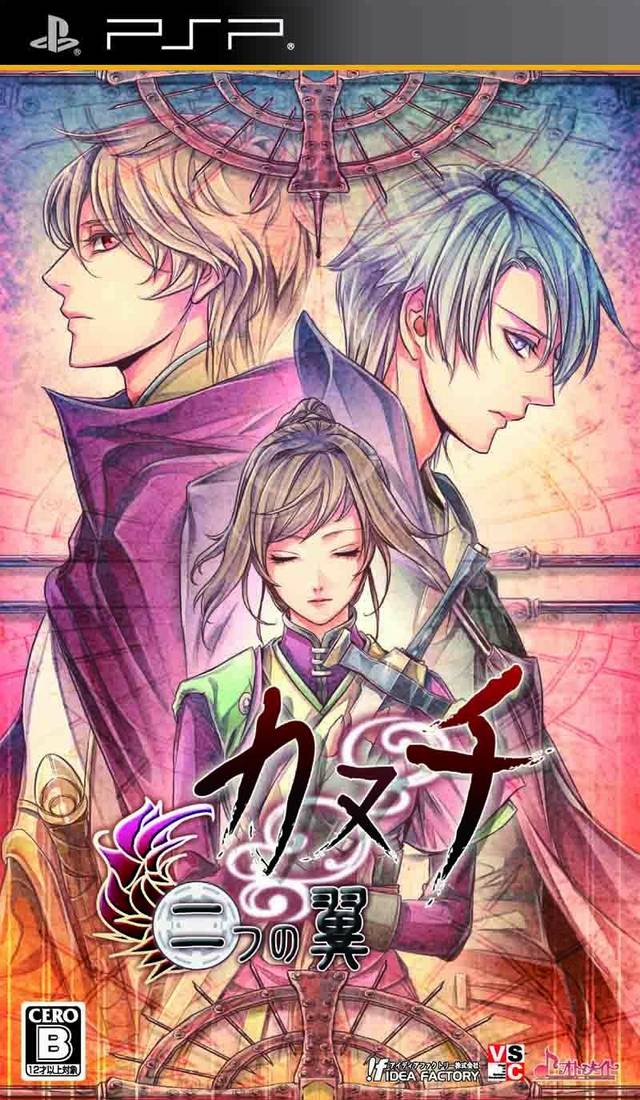
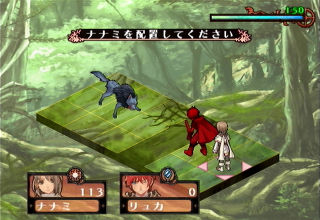
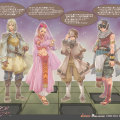
I commend you for your dedication on not only writing a lot about obscure games, but obscure TERRIBLE games that most people are content to just forget about their existence.
I love to bring hidden gems to light, but even I don’t know why I write about the bad ones. Maybe to warn people to stay away? In terms of overall quality and (lack of) enjoyment, Kamiyo Gakuen is one of the worst games I’ve ever played. Everyone, run!
This game is so bad I couldn’t even find it on backloggd or igdb to add to the list of japan only VA games I curate. Also you mentioned the Asmik Ace Tenshou games, are they also really poor? I was thinking of playing it…
I haven’t played any of those games, though I would like to one of these days. They aren’t really well known, but they had a fairly devoted cult following.